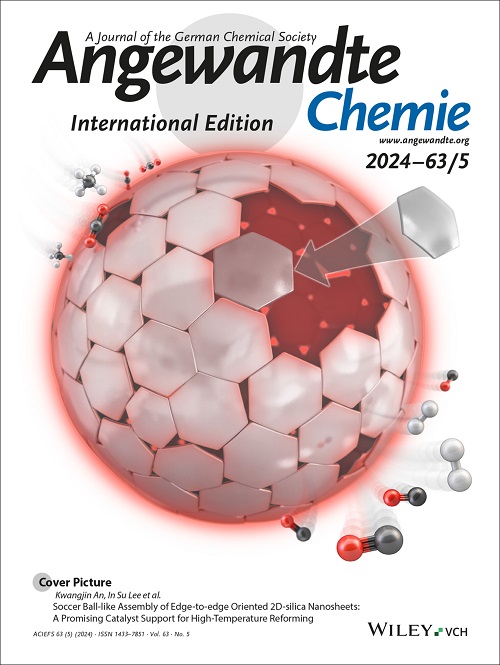Engineered C‐N Lyases for Stereoselective Synthesis of Tertiary Amines
IF 16.1
1区 化学
Q1 CHEMISTRY, MULTIDISCIPLINARY
引用次数: 0
Abstract
Optically pure N‐functionalized α‐amino acids are valuable chiral building blocks for pharmaceuticals, nutraceuticals, and agrochemicals. Ethylenediamine‐N,N‐disuccinic acid lyase from Chelativorans sp. BNC1 catalyzes the addition of a wide range of aliphatic and aromatic primary amines to fumarate, producing the corresponding enantioenriched N‐substituted L‐aspartic acids. In this work, the enzyme was subjected to iterative cycles of site‐saturation mutagenesis and screened for increased activity for the addition of 2‐((methylamino)methyl)aniline to fumarate. The final variant displayed an activity of 3 orders of magnitude higher compared to the wild‐type enzyme. Unexpectedly, the enzyme catalyzed the hydroamination of fumarate with the aliphatic secondary amine of the starting substrate, rather than with the aromatic primary amine, leading to the formation of a tertiary amine. Exploring the substrate scope showed that the enzyme accepts various substituted N‐methyl‐1‐phenylmethanamines for the hydroamination of fumarate, yielding N,N‐disubstituted L‐aspartic acids in high optical purity (up to >99% ee). Furthermore, we showed that the enzyme accepts several ortho‐substituted anilines that were previously not accepted by the wild‐type enzyme, yielding the corresponding N‐arylated L‐aspartic acids in high enantiomeric excess (>99% ee). This serendipitous finding enables a new strategy for the biocatalytic synthesis of tertiary amines, unlocked within the C‐N lyase toolbox.三维选择性合成叔胺的工程C - N裂解酶
光学纯N功能化α -氨基酸是药物、营养药品和农用化学品有价值的手性组成部分。Chelativorans sp.的乙二胺- N,N -二琥珀酸裂解酶BNC1催化一系列脂肪族和芳族伯胺加成富马酸盐,生成相应的富集对映体N -取代L -天冬氨酸。在这项工作中,对该酶进行了反复循环的位点饱和诱变,并筛选了在富马酸盐中添加2 -((甲氨基)甲基)苯胺后活性的增加。与野生型酶相比,最终变体的活性提高了3个数量级。出乎意料的是,该酶与起始底物的脂肪族仲胺催化富马酸氢胺化,而不是与芳香伯胺,导致叔胺的形成。对底物范围的探索表明,该酶接受各种取代的N‐甲基‐1‐苯基甲烷胺进行富马酸氢胺化反应,产生N,N‐二取代的L‐天冬氨酸,光学纯度高(高达99% ee)。此外,我们发现该酶可以接受几种邻位取代的苯胺,而这些苯胺以前不被野生型酶接受,从而产生相应的N -芳基化L -天冬氨酸,其对映体含量很高(99% ee)。这一偶然的发现为叔胺的生物催化合成提供了一种新的策略,在C‐N裂解酶工具箱中解锁。
本文章由计算机程序翻译,如有差异,请以英文原文为准。
求助全文
约1分钟内获得全文
求助全文
来源期刊
CiteScore
26.60
自引率
6.60%
发文量
3549
审稿时长
1.5 months
期刊介绍:
Angewandte Chemie, a journal of the German Chemical Society (GDCh), maintains a leading position among scholarly journals in general chemistry with an impressive Impact Factor of 16.6 (2022 Journal Citation Reports, Clarivate, 2023). Published weekly in a reader-friendly format, it features new articles almost every day. Established in 1887, Angewandte Chemie is a prominent chemistry journal, offering a dynamic blend of Review-type articles, Highlights, Communications, and Research Articles on a weekly basis, making it unique in the field.

 求助内容:
求助内容: 应助结果提醒方式:
应助结果提醒方式:


